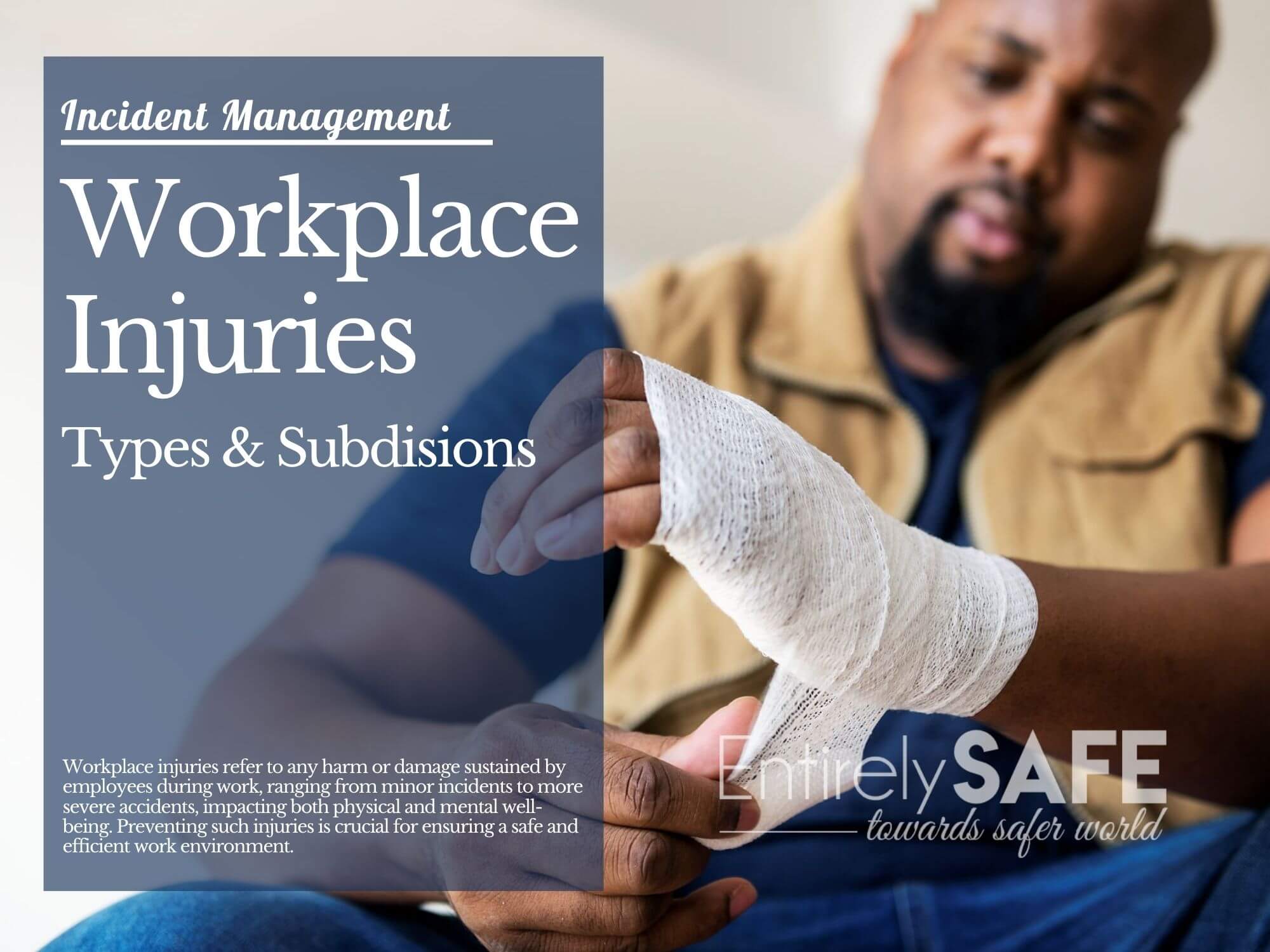Types, Subdivisions of Workplace Injuries

In the fast-paced world of modern industries, prioritizing workplace safety remains a cornerstone for success. This comprehensive guide explores various types of workplace injuries, their subdivisions, and essential prevention strategies. By understanding the nuances of potential risks in different work environments, we aim to empower employers and employees to implement proactive safety measures.
Slips, Trips, and Falls
These are some of the most common workplace injuries that can occur due to slippery surfaces, uneven flooring, or walkway obstacles.
- Slip on a wet or oily surface.
- Trip over an object left in a walkway.
- Fall from a height due to lack of fall protection.
Musculoskeletal Injuries
These injuries affect the muscles, tendons, ligaments, nerves, and blood vessels. They often result from lifting heavy objects, repetitive motions, or poor ergonomics.
- Strain from lifting heavy objects.
- Sprain from sudden movements or awkward postures.
- Tendonitis from repetitive motions without proper ergonomic support.
Cuts and Lacerations
These injuries occur when sharp objects, such as knives or broken glass, penetrate the skin. They can happen in various settings, including manufacturing plants, kitchens, and construction sites.
- Knife cuts in food processing industries.
- Machinery-related lacerations in manufacturing.
- Glass-related cuts in construction or glass industries.
Burns and Scalds
These injuries can be caused by heat, chemicals, electricity, or radiation. They can range from minor to severe, depending on the source of the burn and the duration of exposure.
- Thermal burns from contact with hot surfaces or flames.
- Chemical burns from exposure to corrosive substances.
- Electrical burns from faulty wiring or electrical equipment.
Struck-by or Caught-in/Between Injuries
These occur when workers are struck by a moving object or caught between two objects. It’s common in construction sites, warehouses, and manufacturing facilities.
- Struck by a falling object from shelves or cranes.
- Caught in machinery with moving parts.
- Struck by a vehicle or heavy equipment at a construction site.
Repetitive Strain Injuries (RSIs)
RSIs develop over time due to repetitive movements or overuse of certain muscles. Examples include carpal tunnel syndrome and tendonitis.
- Carpal tunnel syndrome from constant typing.
- Tendonitis from repeated overhead reaching in assembly lines.
- Lower back strain from constant lifting without proper technique.
Respiratory Conditions
Workers may develop respiratory conditions due to exposure to hazardous fumes, dust, or chemicals. This can lead to short-term or long-term health issues.
- Asthma from exposure to dust or fumes in manufacturing.
- Pneumonia from inhaling harmful particles.
- Lung cancer from prolonged exposure to asbestos or other carcinogens.
Electrical Injuries
These occur due to electrical hazards in the workplace. They can range from minor shocks to more severe incidents, leading to burns, cardiac arrest, or even death.
- Minor shocks from faulty equipment.
- Electrical burns from direct contact with live wires.
- Cardiac arrest from exposure to high-voltage currents.
Toxic Exposure and Chemical Burns
Exposure to toxic substances or chemicals can lead to burns, skin irritation, respiratory issues, or long-term health problems.
- Skin burns from exposure to corrosive chemicals.
- Inhalation of toxic fumes leading to respiratory issues.
- Allergic reactions from exposure to specific chemicals.
Stress-Related Injuries
Workplace stress can lead to various health issues, including mental health conditions like anxiety, depression, and even physical symptoms like headaches and high blood pressure.
- Anxiety leading to panic attacks and increased heart rate.
- Depression causing prolonged absence from work.
- Headaches and migraines from high-stress situations.
We’ve covered a lot about workplace injuries and how to prevent them. Now, it’s your turn! Share your stories, thoughts, or any hacks you use to stay safe at work in the comments. Your input can make a real difference in keeping everyone safe and sound. Let’s make our workplaces the best they can be, together!

